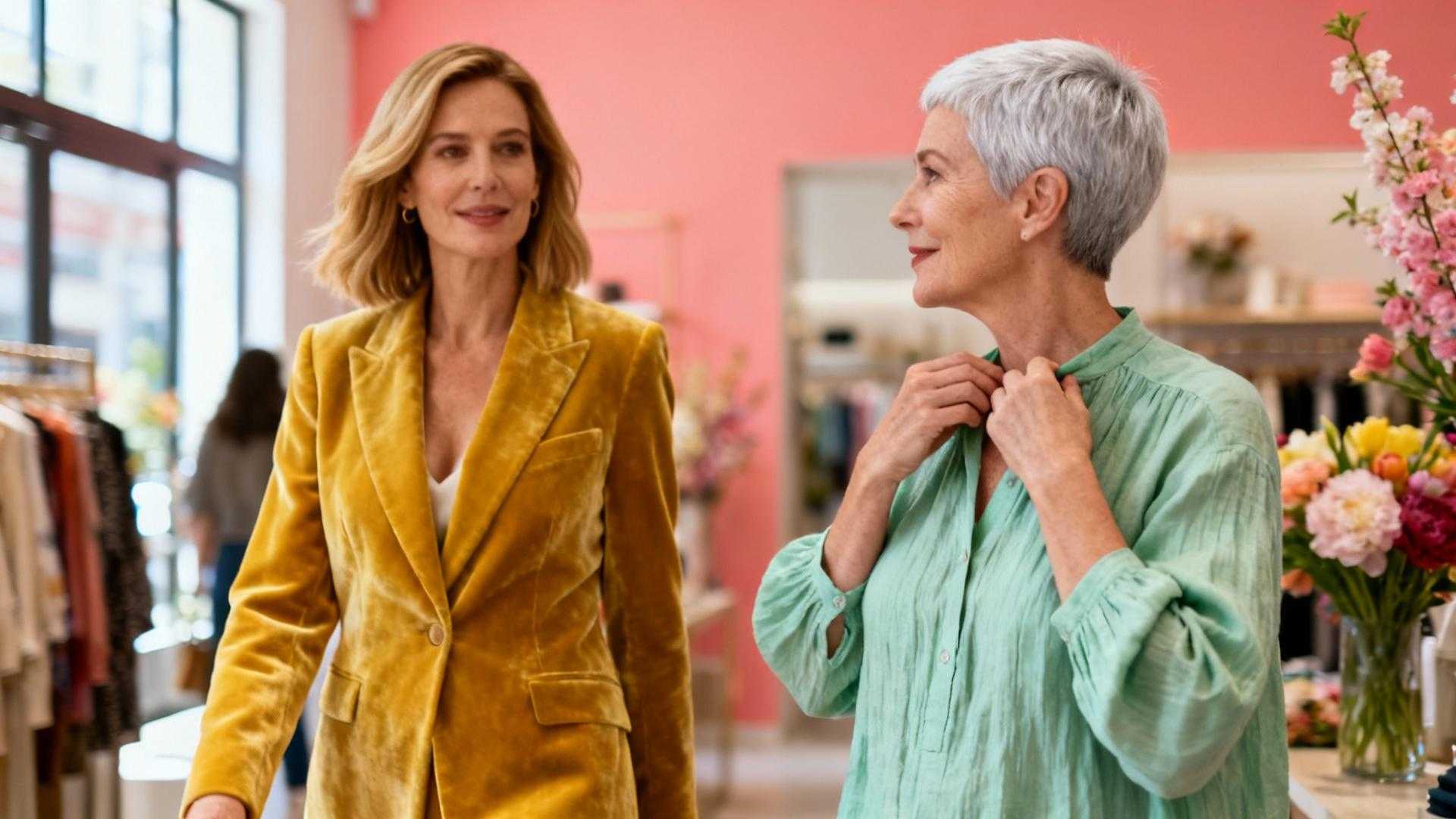I used to think black was my signature color—safe, slimming, and effortlessly chic. But after years of reaching for the same dark pieces, something felt off. My wardrobe had become a uniform, and I realized I was hiding rather than expressing myself. When I finally stepped away from all-black everything, the transformation went beyond fashion—it affected my mood, confidence, and even how others responded to me.
The moment I realized black wasn’t serving me
It happened during a fall afternoon when I caught my reflection in a store window. Surrounded by vibrant autumn leaves and warm sunlight, I looked like a shadow. That’s when it hit me: I’d been dressing for invisibility, not joy. Research from color psychology experts suggests that the colors we wear directly influence our emotional state and how others perceive us.
I wasn’t alone in this realization. Fashion editor Anna LaPlaca notes that while black remains timeless, the 2025 trend clearly favors layered richness and warm hues that feel like an extended personal story, not just a blank canvas.
Why butter yellow became my game-changer
My first step away from black was a butter yellow midi dress from Nobody’s Child. The color felt bold but approachable—warm without being overwhelming. I paired it with my usual black boots to ease the transition, and the response was immediate. Colleagues commented that I looked energized, and honestly, I felt it too.
Harper’s Bazaar’s Fashion Director explains that butter yellow and rich amber aren’t just colors—they’re emotional choices that bring life and warmth into autumn wardrobes, signaling a break from the cold neutrality of black.
“Butter yellow and rich amber are not just colors; they’re emotional choices that bring life and warmth into autumn wardrobes, signaling a break from the cold neutrality of black.” — Fashion Director, Harper’s Bazaar
The unexpected psychology behind color choices
What surprised me most was how wearing color affected my daily interactions. People approached me more easily, conversations flowed naturally, and I felt more present. Color acts as a social signal—it invites connection rather than creating barriers.
Think of your wardrobe like a language. Black is a period—definitive and closed. Color is an invitation, an open door. When you shift from monochrome to vibrant tones, you’re literally changing the conversation you have with the world.
Building a balanced color palette
I didn’t abandon black entirely—that felt too extreme. Instead, I created a 70/30 rule: 70% warm neutrals and colors, 30% black for grounding. This approach felt manageable and authentic to my style evolution.
- Mocha and caramel tones: These rich neutrals replaced black as my go-to base colors, offering warmth without feeling too bold
- Mint green accents: Perfect for adding freshness to fall palettes, creating unexpected contrast
- Currant and amber pieces: Statement colors that command attention while maintaining sophistication
- Tactile fabrics: Tencel and soft knits in varied colors made the transition feel luxurious rather than forced
What sustainable brands got right
Switching to color also meant choosing better quality pieces. Brands like Reformation and THE FRANKIE SHOP offer colorful alternatives using eco-conscious fabrics. Sophie Chang, a sustainable fashion advocate, points out that stopping wearing all black is also about embracing sustainability—pieces made from eco-conscious fabrics in soft neutrals help consumers feel good inside and out.
Similar to how certain colors can refresh your appearance, choosing sustainable options adds another layer of positive impact.
The morning wardrobe shift that changed everything
I started laying out colorful outfits the night before, similar to establishing consistent morning rituals. This simple practice removed the temptation to grab another black sweater and made color choices feel intentional rather than stressful.
Small swaps that made the biggest difference
You don’t need a complete wardrobe overhaul. Start with strategic replacements that maximize impact while honoring your budget and comfort level.
- Replace your black jacket: A gelso oversized blazer or mocha leather jacket creates instant warmth
- Add color through accessories: Scarves, bags, and shoes in vibrant tones ease the transition
- Choose printed pieces: Patterns naturally incorporate color without feeling too bold
What surprised me most about this journey
The shift affected more than my closet. Just as small health changes compound over time, daily color choices created a cumulative mood-lifting effect. I felt more optimistic, approachable, and authentically myself.
Style influencer Lena Berninger shares this sentiment: “I used to live in black, but once I discovered mixing in neutrals and pastels with my core wardrobe, it transformed not just my style but my mood daily.”
“I used to live in black, but once I discovered mixing in neutrals and pastals with my core wardrobe it transformed not just my style but my mood daily.” — Lena Berninger, Style Influencer
Will you start your own color revolution?
Breaking up with all-black doesn’t mean abandoning sophistication—it means expanding your visual vocabulary. Whether you start with butter yellow, mocha, or mint green, the key is choosing colors that resonate with who you are becoming, not who you used to be. What color has been calling to you lately?
